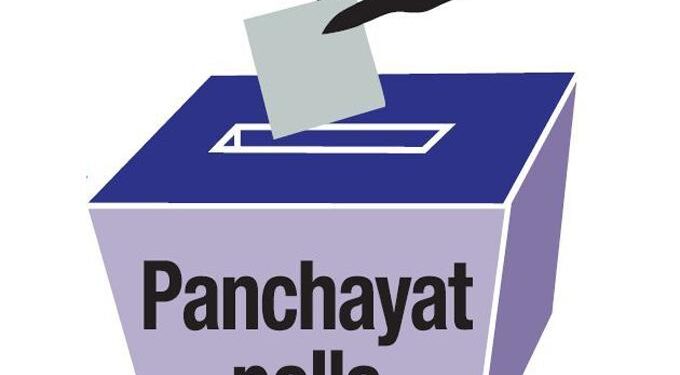Telangana Launches QR-Enabled Smart Ration Cards to Revolutionize Public Distribution Ahead of Panchayat Elections
In a progressive stride towards improving transparency and operational efficiency within the public distribution framework, Telangana’s Chief Minister A. Revanth Reddy is spearheading the introduction of smart ration cards embedded with QR code technology. This initiative, timed strategically before the upcoming panchayat elections, aims to benefit nearly 40 lakh households across the state. By digitizing ration cards and integrating QR codes, the government intends to simplify access to subsidized essentials while curbing fraudulent activities that have long plagued distribution channels.
This modernization effort not only promises smoother service delivery but also reflects a broader governmental push toward embracing digital tools for enhanced governance and citizen engagement.
Key Advantages of Smart Ration Cards Featuring QR Codes
- Enhanced Transparency: The incorporation of QR codes ensures accurate tracking and reduces errors or manipulation during commodity allocation.
- User-Friendly Access: Beneficiaries can avail their entitlements swiftly without enduring lengthy queues or bureaucratic delays.
- Robust Data Protection: Digital verification safeguards personal information against misuse while enabling real-time authentication at distribution points.
The Chief Minister highlighted that this technological upgrade aligns with Telangana’s vision for accountable governance by leveraging innovation to meet citizens’ welfare needs more effectively as election season approaches.
How QR Code Integration Streamlines Ration Distribution in Telangana
The deployment of smart ration cards equipped with scannable QR codes is set to overhaul how essential commodities are distributed throughout Telangana. This system facilitates instant verification by local officials, drastically reducing wait times at fair price shops and minimizing human errors in beneficiary identification. According to recent data from similar digital initiatives across India, states implementing such technologies have witnessed up to a 30% reduction in leakages within their public distribution systems (PDS).
This advancement addresses persistent challenges like pilferage and mismanagement by enabling transparent monitoring mechanisms accessible via mobile platforms—empowering beneficiaries with direct insight into their entitlements and transaction history.
- Instant Authentication: Quick scanning accelerates service delivery at ration outlets nationwide.
- Error Reduction: Automated data capture minimizes discrepancies ensuring rightful allocation of resources.
- User Empowerment: Mobile accessibility allows beneficiaries real-time updates on stock availability and entitlement status through dedicated apps or SMS alerts.
| Feature | Description & Benefits |
|---|---|
| QR Code Scanning | Simplifies beneficiary verification process for faster transactions at point-of-sale terminals. |
| Real-Time Monitoring | Enables authorities & citizens alike to track supply chain progress transparently. |
| Accountability Enhancement | Reduces corruption risks through audit trails generated by digital records. |
Impact on Voter Participation and Expectations Ahead of Panchayat Elections in Telangana
The rollout of these technologically advanced smart ration cards arrives as local elections approach, potentially reshaping voter-government dynamics in Telangana. By ensuring more transparent access to subsidized food grains—a critical concern among rural populations—the administration hopes this move will foster increased trust among constituents.[1]
This initiative signals an evolving trend where voters increasingly expect seamless integration between technology and public services. It may encourage higher electoral participation rates as citizens feel more empowered through improved service delivery mechanisms tailored for convenience.[2]
- Easier Service Accessibility: Digital transformation sets new standards requiring uninterrupted access across all welfare schemes beyond just rations.
- Demand for Greater Transparency: Civic expectations rise regarding accountability measures embedded within government programs.
- Civic Engagement Boost: The use of innovative tools could mobilize younger demographics who prioritize tech-driven solutions when evaluating political candidates.
| Service Area | Anticipated Enhancements |
|---|---|
| Ration Supply Chain Management | Accelerated processing times coupled with precise beneficiary targeting enabled via digitization. |
| Grievance Handling Systems | Streamlined complaint resolution using online portals integrated with mobile notifications. |
| Information Dissemination | Real-time updates delivered directly through smartphone applications enhancing awareness about entitlements.
} } Conclusion: Modernizing Telangana’s Public Distribution System Through Smart Ration Cards With QR TechnologyThe launch of smart ration cards featuring integrated QR codes marks a pivotal advancement in strengthening transparency, accuracy, and user convenience within Telangana’s public distribution network. Under Chief Minister A. Revanth Reddy’s leadership, this initiative targets approximately forty lakh families—streamlining essential commodity access while combating fraud effectively amid rising demands for accountable governance ahead of panchayat polls.[3] This forward-thinking approach not only modernizes welfare delivery but also exemplifies how technology can bridge gaps between governments and citizens—setting a benchmark likely influencing future reforms across other Indian states aiming for inclusive growth backed by digital innovation. As election day nears, stakeholders will closely observe how these changes impact both administrative efficiency and voter sentiment moving forward into an era where tech-enabled governance becomes indispensable.
|














